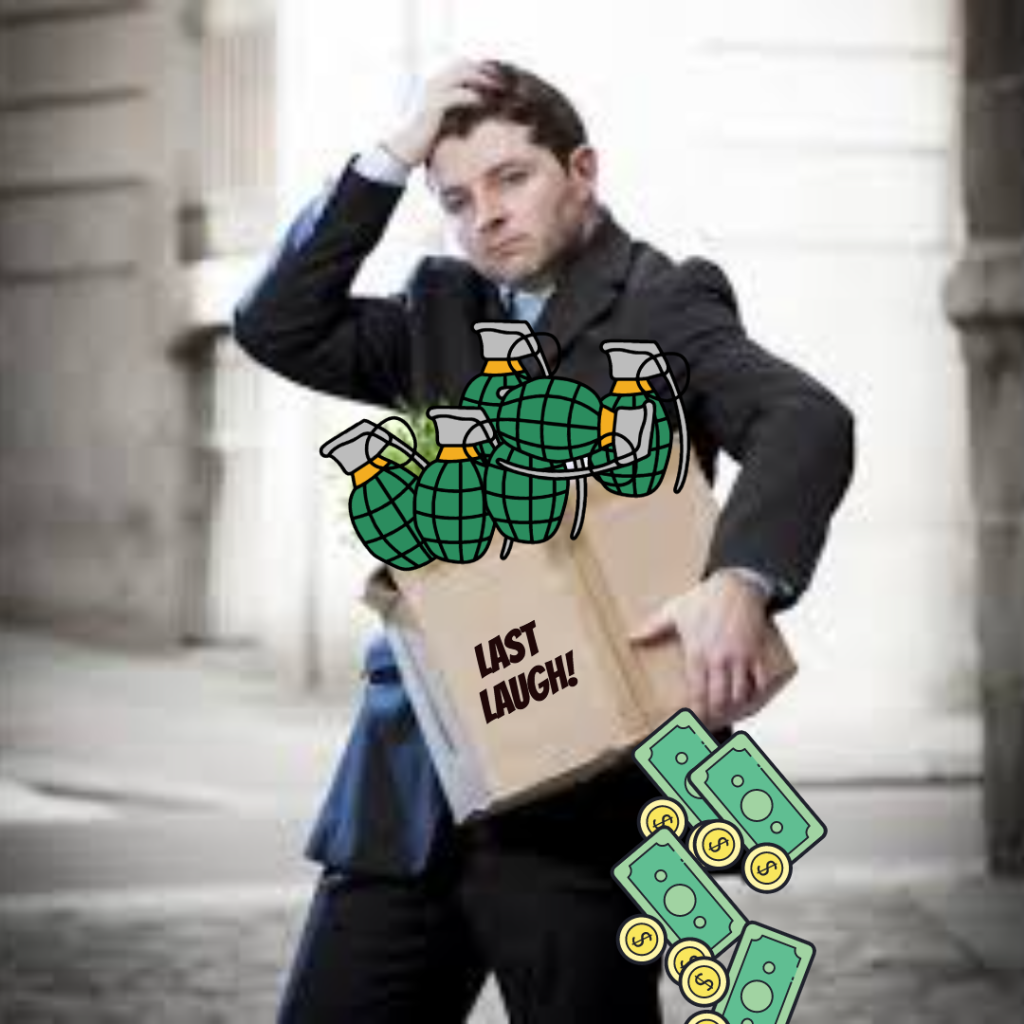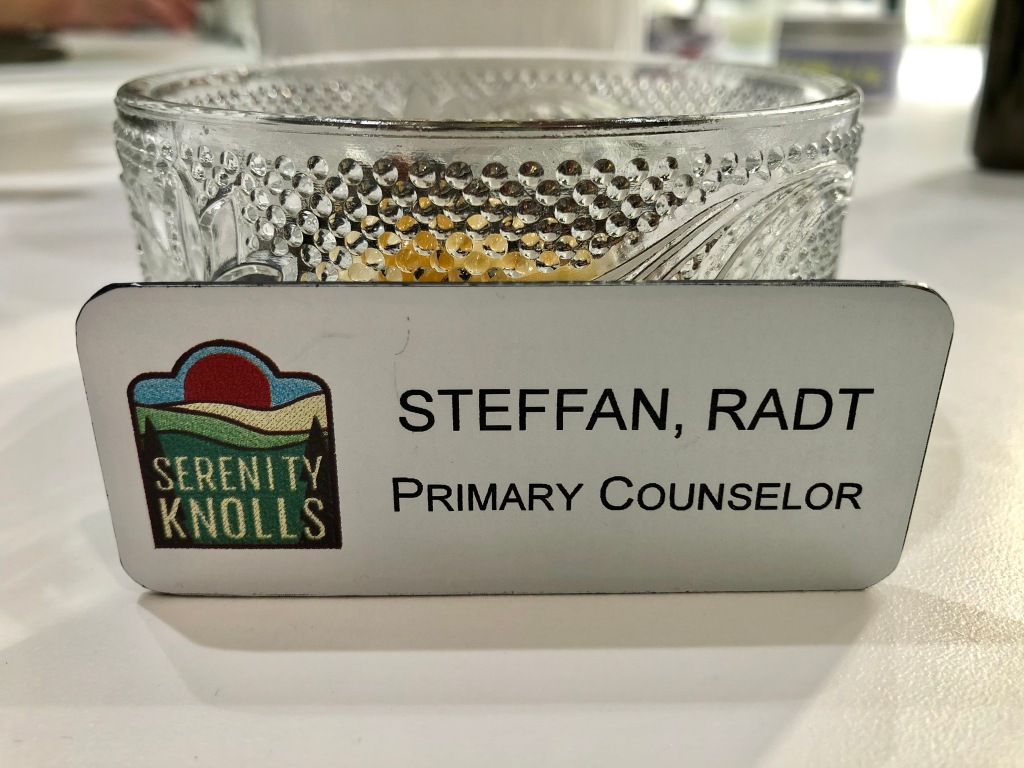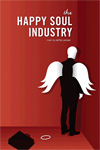Chasing Windmills
January 14, 2021

Continued from previous post…
Looking back, the corner office and all its trappings could be summed up via the old expression: be careful what you wish for. You’d gotten the carrot only to find out you didn’t like carrots. You’d grabbed the brass ring but it hurt like hell holding on. Climbing the ladder you hadn’t realized the rungs below would disappear until it was too late. There was no stepping down a few lengths to adjust, catch your breath, and assess the view. You had to keep climbing or plummet, which is exactly what happened. This was not to say certain ambitious and notorious colleagues hadn’t greased the rungs, expediting your fall; they had.
Came a time there wasn’t a safety net. No cushy job after the severance. No friends to catch you, even those you’d helped on their own ladders to the top. You try not to be bitter. What good would it do? Resentments were like taking poison and expecting others to suffer.
Enlightenment didn’t prevent you from occasionally trolling these pricks. Waves of resentment rolled in now and again, like the king tides in Marin, defeating you. Maybe you turned to the Internet, desperately trying to find an outlet for your vitriol. Mercifully, mostly, you never pressed send.
You remember the day you crossed the one hundred thousand dollar mark. When you were 30 years old, and recently married. You took Sarah out to celebrate, sat across from her in the restaurant, maybe even held her hand, speaking about the future as if it were a gift. If you ever were in love with her it was then, when nothing felt impossible. That night even drinking too much seemed fine. You don’t remember if you and Sarah made love but it hardly mattered. Intoxicated, the two of you. The next morning hangovers were pleasant. Lazing together in pajamas, drinking coffee, reading the paper, gazing at homes in the real estate section, day dreaming about the fantastic tomorrows both of you would share.
And yet, even then, you knew money was most of all a yardstick for your ego. Titles would serve the same purpose. Copywriter. Senior Writer. Associate Creative Director. Creative Director. Vice President. Group Creative Director. Senior Vice President. Executive Creative Director. Rungs in the ladder. Notches in your belt.
Perhaps after achieving success, as was accused, you became complacent. It’s possible. You had made compromises, believing certain situations required it. You must wonder about that now.
You were most content when your work got noticed, won awards and attracted people to you. One campaign in particular ran the table at all the award shows, garnering praise around the world. It would become the agency’s show pony, and you rode it proudly. The best whore in the whorehouse and you were its pimp. The man. Waiting for an elevator at work, a group of marketing students gathered behind you. You heard one of them excitedly whisper to his mate. “That’s him!” He was talking about you. “No fucking way,” the other guy said.
Way.
Being revered was beyond anything you’d ever experienced, more gratifying than your promotions and trophies. And it had come unsolicited. Out of the ether! For what seemed like the first time, you’d been noticed for greatness not flaws. No longer were you the fat kid punched in the gut and crucified on the diving board. You were special, with proof. You’d waited so long for that moment had fantasized about it. Comeuppance. By then the fantasy was less about smashing your tormentors and more about gaining respect and validation. You had no idea what it would look like until that afternoon by the elevators, when the world shifted, ever so slightly, favoring you.
You chased that feeling like the drug that it was, madly looking for it in every promotion, every raise, every accolade. It was never enough but the next one would be.
Relationships and family took a back seat. Any idiot could find a mate and have babies. Friends were transient. Parents weren’t there. Finally, you had something you could control. What you craved was conditional and directly related to your accomplishments. Your vocation became the most important thing in your life. You drank. You got high. But it was just a byproduct of success or a panacea to failure. Finally, you had a calling.
You were chasing windmills.
Problem Child with a High Salary
January 11, 2021

You had lofty titles: Executive Creative Director, Chief Creative Officer, even Executive Chairman. You were on the board of directors at the most famous advertising agency in Chicago, supposedly the youngest member ever. During this period you commanded a huge salary, more than the President of the United States. Frankly, a lot more, especially when you factored in bonuses and stock options. You earned it; well maybe not all of it and toward the end probably less. Then you got asked to leave, to seek opportunities elsewhere, fired. The last time was probably the mortal blow. You didn’t know it but the job you had now was not going to last.
When it came to work, you were only great at two things: copywriting and presentations. You wrote your way into the boardrooms of the world, turning words over and over until they shone like gemstones. Once there, you would sell. Oh, could you ever! You loved selling and did not demure from it like so many other creative people. Those fools, you thought. Didn’t they know advertising and selling went hand in hand? Processing stage fright into stage-might, you had utter command. At times, it was breathtaking. You were excited to perform and it showed. Your confidence seldom came off as a con. During presentations you were like a kid unwrapping gifts at Christmas.
Alas, while showmanship mattered on the way up, once there, not so much. As a director, they wanted you to hire and fire; delegate and operate; things you came to realize you weren’t very good at. You liked to write and sell work. Truth be told, you weren’t interested in the other stuff. It all seemed beside the point, what you had to do as opposed what you wanted to do. Now it was you who was playing the fool.
At best, you’d possessed what the CEO called, “emotional intelligence,” a backhanded compliment, a quality your peers pretended to admire then grew to despise. In management meetings you lectured that creativity was messy and impossible to regimen. But alas, your left-brain partners valued process over intuition. They lacked patience for the soft skills inherent in the creation of ideas. They couldn’t scope it. So they loathed it. For a so-called creative agency this was, in your view, anathema. And so you had refused to whip your troops into creating. You put good ideas on the wall, and quickly. But it was never enough. Eventually, you became a problem child with a very high salary.
to be continued…
Privileged to Serve
January 2, 2021

In addition to my writing, for the last 6 months I’ve been serving as Primary Counselor in the Treatment of Substance Use Disorders at Serenity Knolls. The pandemic has only heightened the need. I’m privileged to serve.
Long ago, my father told me: “If you want to write copy work as a bartender. You’ll learn what people really think, need and desire.” Well, now I’m working as a counselor for people with alcohol and drug disorders. So, in a way, that box is checked.
The whine of sour grapes or telling my truth and not giving a damn!
December 30, 2020

Been a long time since I wrote about advertising. Why then is my blog called Gods of Advertising if I’m not writing about it? Well, for starters, what is there to write about? From a creative perspective, advertising became irrelevant around the time I did. You can quibble over the year and other details, perhaps cite a few exceptions, but you cannot deny the fact that few consumers (aka people with money to spend) pay advertising any heed. Save for the bottomless pit of transactional messaging permeating our screens, there isn’t much to write home about. Hasn’t been for years. I would say that 75% of every marketing dollar is spent on cliché’ ridden, data driven crap. Creativity in advertising was sick way before Corona virus. Now, it’s on life support.
Not long ago, the so-called Gods of Advertising (always meant to be an ironic term) wishfully opined that the key to remaining relevant in the digital age (let’s say turn of the century) was in mastering social currency. Fearing obsolescence, big shot creative directors like myself and planners and other alleged ad-ninjas went to places like Hyper Island to learn the magic of these new tinier screens and the people who used them. Unfortunately, the bean counters beat us to the punch. Big data replaced the big idea and, well, here we are. There’s more to it than that but I don’t want to write about it any more than you want to read it.
When I unceremoniously exited the business, the writing was on the walls. It sure as hell wasn’t on the page. Copy had turned to content. Strategy became a numbers game. Art directors made shit fast… or else. The result: the aforementioned cliché ridden, data driven transactional crap – also known as content.
For years, I avoided talking this talk because I wanted to believe otherwise. And I was afraid of becoming unemployable. Happened anyway. Now I don’t care and neither does anyone else. I still enjoy writing for clients but for them a big idea is merely converting a strategy line into something they can use until the next quarter rolls around. I’m good at it. And I work fast and cheap. What we all appreciate is the lack of illusion about what we are doing.
Fact. Most clients think Cannes is a sexy place to go on vacation. Period. Where James Bond movies are filmed. Some may remember a celebration of creativity. Like holiday parties. Or bonuses. The mythical Gold Lion is now extinct. Mine are in a storage unit in San Rafael.
You know what? I don’t care anymore. Deep down I wonder if I ever did. I always knew I was getting paid a shit ton of money for doing something intuitive and fun. Once those two criteria were removed –as they have been- all that remained is all that’s left.
Once upon a time, poets were considered special. They had currency. Were celebrated, studied, emulated and revered. Then they faded into the middle pages of the New Yorker. Once upon a time, from 1965 until 2005, (a mere 40 years!), creativity actually mattered. It was like the poetry of yore. And then no one gave a shit about it either.
Not so gentle reader – Would you like me to squeeze the sour grapes further? Relish the whine of discontent? Let me know… I’m in a mood.
Outdueling alcohol and tobacco with advertising is like bringing a knife to a gunfight.

For over 25 years, I worked in the creative department at a number of big name advertising agencies. I was (and am) a copywriter by trade and began my career in that capacity, at the Leo Burnett Company in Chicago. During my lengthy tenure at that storied agency I wrote and produced copy for numerous alcohol and tobacco clients, including (in no particular order): the Phillip Morris company (now named Altria Group), Diageo (Wine & Spirits), Anheuser Busch, and the Miller Brewing company. These were and are Fortune 50 multinational companies spending many, many millions of dollars a year on marketing alcohol and tobacco products to any number of audiences, none more coveted than the youngest populations.
Though federal and state laws were in place regulating the drinking and smoking ages of consumers, by definition mass media easily allowed advertisers to circumvent them. After all, a beer commercial televised on a football game could be seen by adults and children alike. Print media (remember that?) had more discernable target audiences i.e. Playboy and Esquire (adult males) Martha Stewart (adult females), etc. Outdoor adverting (billboards, bus shelters, and the like) had the unique benefit of being able to infiltrate very specific markets via targeted media plans. Putting malt liquor billboards in impoverished urban neighborhoods is a classic and controversial example of how easy it was for advertisers with money to influence the people who could least afford to drink and smoke – economically, sociologically, psychologically, physiologically and even spiritually. But hard times beget hard drinkers and heavy smokers.
And we all knew it.
Really, every department in the traditional ad agency (creative, strategy, accounts, media) was built to optimize getting the right messages to the right people. I spent my days crafting copy specifically designed for specific drinkers and smokers, existing and potential. I knew who they were: their age, sex, ethnicity, proclivities and so on. We all did. Our clients paid us to know everything possible about targeted populations. And they had their own people doing the same. Elaborate strategies were developed and implemented to move product. As data became more accurate and actionable, the ability to optimize reach and efficiency grew exponentially. Unsurprisingly, substance abuse disorders among these targeted groups routinely were in excess of national norms. The ramifications were not lost on public servants and various anti-drug/alcohol/tobacco groups.
Consequently, in order to combat this growing problem, many governmental and societal watchdogs invariably found themselves playing catch up and keep away. Banning outdoor ads near schools and eliminating cigarette ads from many publications were two of the more significant regulatory measures put into place. On another front, groups like Mothers Against Drunk Drivers and the Truth Initiative began calling for more stringent policies while underwriting marketing efforts of their own. Many of their efforts have been successful. For example, most teenagers no longer consider smoking cigarettes a right of passage. But many huge efforts were also huge failures. Recall the “Just Say No!” campaign? It had the opposite effect on young people, perversely making illegal drugs the definition of cool. Getting folks to try something is a lot easier than getting them to stop. It’s not so much a matter of putting the genie back in the bottle; it’s getting the genie to stop drinking from it!
Therefore, during our class discussion on prevention strategies for reaching and influencing people with either existing substance use disorders or the potential to develop an SUD, it became painfully apparent that these same strategies were (and still are) employed by advertisers to reach the very same audiences!
For example: The Diffusion of Innovations Framework i.e. utilizing an influencer to create momentum behind a new idea is among the oldest saws in the advertising tool kit. E.M. Rogers may have coined the phrase in 1962 but using celebrities to sell goods and services dates back hundreds of years, not long after the printing press was developed.
The Health Belief Model we talked about (that messages will achieve optimal behavior change if they successfully target perceived barriers, benefits, self-efficacy, and threat) perversely mirrors the most common messaging strategies employed by marketers of beer, wine and spirits: Drink this and you’ll be in with the in crowd. Different agendas. Same conceit. “Good for you” can be spun.
Advertisers are as interested in the Stages of Change Theory as any drug counselor, assessing someone for the likelihood that they might use as opposed to might not.
And so on.
Rules and regulations change. But human nature never varies. The theories driving many of the popular environmental strategies for the prevention of drug and alcohol problems are eerily (and necessarily) similar to the strategic marketing plans for alcohol and tobacco. When anti-groups have the most success effecting the environment via advertising it is when they employ the same levels of creativity, sophistication (and hopefully budgets) as their nemesis do. Like they say: fight fire with fire. Know your enemy.
Written for course at Berkeley Extension Certificate Program in the Treatment of Substance Use Disorders



 The Happy Soul Industry
The Happy Soul Industry The Last Generation
The Last Generation